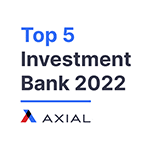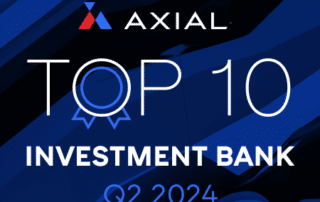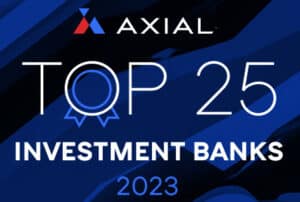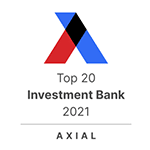
Often an improving economy and renewed growth put more stress on corporate balance sheets than the recession itself. During a business decline, liquidity is generated through the impact of lower sales which leads to lower receivables outstanding, and a net generation of cash (after some lag). Similarly, as inventories are worked off, the need for working capital declines and cash may even be generated through asset sales as closed plants and operating divisions are liquidated.
When better times return, this serendipitous process goes into a quick reverse. Increased sales result in increased receivables; inventories must be rebuilt—often at a higher cost as raw materials markets begin to tighten—and, if growth is truly robust, the need for additional equipment and plant facilities will soon become apparent.
Banks May Be Slow to Fund the Rebound
Unfortunately, the traditional sources of liquidity may be slower to return. Banks that were quick to tighten credit standards during the bust may be slow to recognize an improving economy and loosen their standards to fund the rebound. Many companies will have lost money during the recession, particularly if they had high levels of fixed costs, or if they were forced to liquidate excess inventories at fire sale prices.
With retained equity down, loan covenants may have been breached, leaving no room for growth in credit lines. Compounding these issues, tightened credit standards mean that banks are looking for more, not less equity on borrower balance sheets. We regularly see banks demanding equity injections from shareholders, imposing strictly monitored asset-based loan formulas where none were required previously, and requiring much higher cash flow coverage ratios.
Companies that were overleveraged in the boom may find themselves forced to further shrink their balance sheets to meet these requirements. Rather than enjoying renewed growth as the economy improves, these companies may find themselves forced to turn away customers absent the ability to raise new capital. In this article we discuss one important source of secondary capital—mezzanine debt.
Mezzanine Debt Can Fill in Balance Sheets Gaps
The purpose of mezzanine debt is to fill in gaps in the balance sheet that can be supported with company cash flow, but that are unsupported by pledgable assets or too risky to be underwritten by a bank. To a great extent, mezzanine fell out of favor during the bubble.
Banks that traditionally would not have lent more than two times cash flow were fighting each other for leveraged loans at three and a half to five times EBITDA. These loans were readily supplemented by Tranche B and second lien loans from hedge funds, business development companies (BDCs), and special purpose entities (SIVs) that supplemented aggressive bank loans to enable private equity groups to participate in a feeding frenzy of ever-increasing purchase multiples.
Post-Bubble, Traditional Mezzanine Lenders are in Demand
The hedge funds are licking their wounds and the non-bank investment pools are in liquidation. More traditional non-bank lenders are either in deep trouble (CIT and Textron) or pulling back existing commitments to deleverage their balance sheets. Once again, the traditional mezzanine lenders find their capital in great demand.
Mezzanine lenders generally are funded as investment partnerships backed by high net worth individuals and institutional investors such as pension funds and not-for-profit entities. Many are sponsored by private equity groups to provide financing support for buyouts, but others are independent, typically focusing on growth financings and dividend recapitalizations.
These funds generally focus on transactions of five million dollars or more and require that the borrower have a proven track record of generating three million or more of EBITDA. Many set the bar higher, targeting borrowers with earnings of $7 million (EBITDA) or more.
A subset of mezzanine lenders look at smaller deals down to $2 to $3 million, but few target companies with EBITDA less than $2 million. At the lower end of the market, mezzanine-like loans also are available from government subsidized investment pools including Small Business Investment Companies (SBICs), which can obtain inexpensive leverage from the U. S. Small Business Administration (SBA), and smaller BDCs.
In the past year, the SBA has announced its intent to increase the matching leverage available to SBICs. We are aware of several groups intent upon forming new SBICs, but have received mixed reports on their ability to raise the required capital. Since these entities are among the few sources of secondary funding for smaller companies with capital needs down to $1 million, success of these ventures is critical to future business growth.
Mezzanine lenders typically provide a second tier of capital behind asset-based or senior bank loans. Where the senior debt might typically be underwritten at two or two and one half times cash flow in the current market, addition of a mezzanine tranche will likely add one turn (i.e. one times cash flow) to bring total debt to three to three and one half times EBITDA. Though far more restrictive than what was available at the peak of the bubble, these leverage multiples are not overly conservative when compared with many past lending environments.
Negotiating Leverage of Mezzanine Lenders Has Improved
During the bubble, mezzanine lenders had to compete with numerous other sources of secondary capital and found their total returns often driven down to the low to mid-teens (and even lower on some larger financings). Equity warrants, which were the norm for mezzanine deals in the 1990’s, became impossible to negotiate except with the smallest and weakest credits.
Now, with renewed demand and competitors gone, the negotiating leverage of the mezzanine providers has improved tremendously. Today, typical mezzanine deals will carry a current coupon of 13 to as much as 15 percent (versus historical levels of 12 to 13 percent). Additionally the lender may receive four percent or more in payment in kind return (i.e. interest accrued, but not paid in cash, which is added to the principal as it accrues).
Finally, the lender will almost certainly require equity purchase warrants to push total annual returns from the high teens to low twenties on strong deals and as much as the mid-thirty percent range when the credit carries more equity risk.
Increasingly, Deals Are Structured as Secured Second Lien Financings
Traditionally, mezzanine debt was structured as an unsecured term loan with a bullet payment due five years out, sometimes structured with a provision for excess cash flow recapture. In the current environment, deals are increasingly structured as secured second lien financings.
Additional terms may include required amortization payments and put provisions to guaranty a minimum return from equity warrants. Mezzanine lenders also may request observation rights on corporate boards and other covenants to position them to take action to protect their interests in the event borrower performance deteriorates.
Mezzanine funds remain a favorite alternative investment vehicle for institutional investors who increasingly prefer the safety of a minimum cash return rather than the grab for the higher returns theoretically possible from control investing. As a result, mezzanine funds raised a record level of new capital in 2008, and sponsors indicate that additional funding is available as required.
About John Slater: As Team Leader of FOCUS’ Financial Alternatives Services Team (FAST), Mr. Slater strives to help companies avoid financial crises through arranging replacement senior financings and junior capital placements.
FOCUS’ FAST Team also assists with planning and negotiating debt restructurings and arranging for tax advantaged and federally subsidized and guaranteed financing vehicles. For more information, contact John Slater at 404-963-8255 or via email at [email protected].













